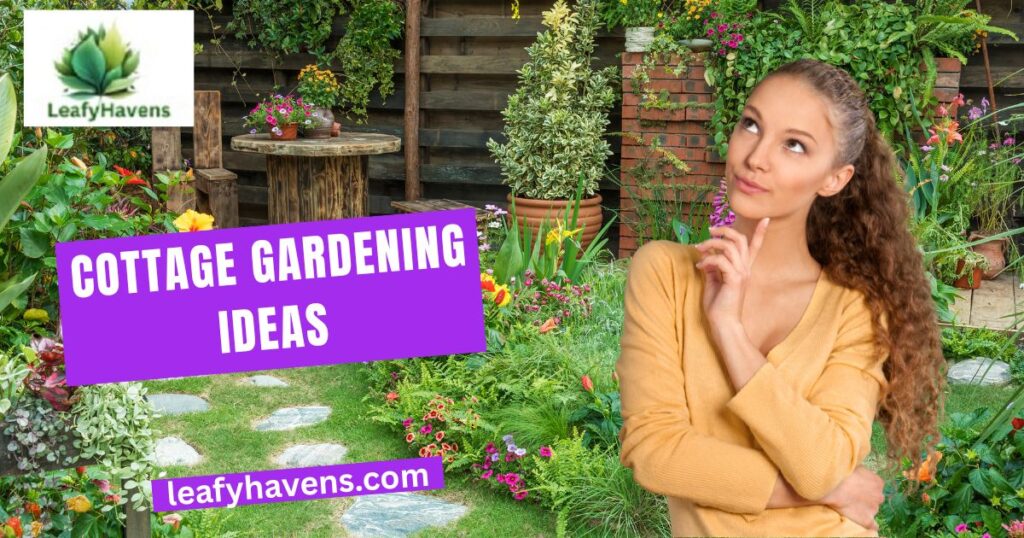Ever looked at a garden so full of life, color, and charm that it felt like stepping into a storybook? If you’re nodding yes, then it’s time you explore the magic of cottage gardening ideas. This timeless style of gardening transforms any space — big or small — into a blooming sanctuary of peace and beauty.
- What Makes Cottage Gardens So Special?
- Step-by-Step Guide to Begin Your Cottage Garden Journey
- Must-Have Products to Start Your Cottage Garden
- Why Cottage Gardening Is Perfect for Your Home
- Helpful Tips for Planning a Cottage Garden Like a Pro
- Frequently Asked Questions About Cottage Gardening Ideas
- Now's the Time to Bring Your Cottage Garden to Life
- 🌿 Need Help Creating Your Dream Cottage Garden?
What Flowers Come Back Every Year? These are called perennials, and they’re the backbone of any charming garden. Think of lavender, coneflowers, peonies, or hollyhocks — these flowers return season after season with minimal effort, making them perfect for a low-maintenance, high-impact design. From romantic english cottage garden looks to budget-friendly DIY tips, you’ll learn exactly how to turn your outdoor space into a cozy floral paradise. Plus, this step-by-step guide will help you start planning a cottage garden with confidence and creativity.
What Makes Cottage Gardens So Special?
A cottage garden isn’t your average tidy garden with neat rows and trimmed hedges. It’s charmingly wild, full of mixed textures, vibrant colors, buzzing pollinators, and often a nostalgic touch of the past.
What began as a practical garden style in rural England, filled with herbs, veggies, and flowers, has evolved into one of the most beloved gardening approaches — perfect for anyone craving a natural, lush, and informal look.
Step-by-Step Guide to Begin Your Cottage Garden Journey
Let’s walk through the easy steps you can follow to create your very own cottage garden front yard or backyard wonderland.
1. Start With a Simple Sketch and Plan
Though it may look spontaneous, great cottage gardening starts with a little preparation:
- Map your space
- Choose soft, harmonious color schemes
- Group plants based on sun and water needs
- Think about paths, focal points, and rustic décor
A loose plan gives you room to be creative without losing harmony.
2. Pick the Right Plants (Your Garden’s Soul)
To create that wild, overgrown look, use a mix of cottage garden perennials, annuals, shrubs, and climbers. Here are some popular choices:
- Lavender – for scent and pollinators
- Foxglove – tall and dramatic
- Coneflower – colorful and long-lasting
- Hollyhocks – classic english cottage garden staple
- Roses – especially old-fashioned or climbing varieties
These perennials will bloom year after year, building a full, rich garden with less effort over time.
3. Add Height and Texture With Climbers and Structures
Let climbing plants run wild on trellises, fences, or arches. Use:
- Clematis
- Wisteria
- Climbing roses
Adding vertical elements breaks the monotony and makes even small gardens feel larger and layered.
4. Avoid Symmetry: Use Curves and Layers
Forget perfect lines. Instead:
- Design with curves
- Layer tall plants in the back, medium in the middle, low at the front
- Allow plants to spill over edges, creating softness
This is where cottage gardening ideas really shine — they feel alive, organic, and welcoming.
5. Decorate With Vintage and Rustic Accents
To complete the look, consider:
- Stone or gravel pathways
- Reclaimed wood benches
- Birdhouses, lanterns, and watering cans
- Wicker chairs or an old wheelbarrow as a planter
These small touches reflect your personality and add to the garden’s storybook charm.
6. Invite Nature In With Pollinator-Friendly Plants

One of the joys of a cottage garden is the life it attracts. Make sure to plant:
- Bee balm
- Butterfly bush
- Sunflowers
- Milkweed
They’ll bring butterflies, bees, and birds — adding motion, sound, and a natural balance to your garden.
7. Keep Maintenance Low and Natural
These gardens are beautiful because they’re a bit messy. That said, you’ll still need to:
- Deadhead spent flowers to encourage more blooming
- Mulch to retain moisture and reduce weeds
- Prune only when necessary — let nature take its course
A little upkeep goes a long way, but over-trimming takes away the magic.
Must-Have Products to Start Your Cottage Garden
You don’t need to break the bank — just invest in a few key items that make the process easier and more rewarding:
- Organic compost – essential for healthy plant growth
- Perennial seeds or starters – long-term color and texture
- Trellis or garden arches – for climbing plants
- Hand tools – durable, comfortable tools are a must
- Outdoor lights or vintage pots – for that finishing touch
Buy with confidence — these simple additions bring big results, especially when you’re planning a cottage garden from scratch.
Why Cottage Gardening Is Perfect for Your Home
Still thinking if it’s the right fit? Here’s why you’ll fall in love:
- Works beautifully in small front yards or large backyards
- Encourages biodiversity and reduces reliance on chemicals
- Great for families, as it’s interactive and educational
- Turns unused space into a personal sanctuary
- Requires less money and maintenance than formal gardens
No matter your garden size or budget, there’s always room for english garden ideas that bring joy and tranquility.
Helpful Tips for Planning a Cottage Garden Like a Pro

- Mix edibles with florals — herbs, berries, even lettuces work great
- Choose different bloom times for year-round interest
- Let your garden evolve naturally — each year brings new surprises
- Add water features or seating areas for a peaceful retreat
- Shop local nurseries — they often have the best cottage garden perennials suited to your climate
Frequently Asked Questions About Cottage Gardening Ideas
1. What is the easiest way to start a cottage garden for beginners?
Begin with hardy perennials like lavender or daisies, choose a relaxed layout, and build your garden year by year. Start small and let it grow.
2. Can I use cottage gardening ideas for a front yard?
Absolutely. A cottage garden front yard can create a warm and inviting entrance using climbers, colorful flowers, and curved borders.
3. How much space do I need to build a cottage garden?
There are no rules. Even a balcony or a small corner of your yard can be transformed using english garden ideas and compact plant varieties.
4. Are cottage gardens low-maintenance?
Yes! Once established, they mostly need watering, deadheading, and the occasional trim. They’re much less fussy than formal gardens.
5. What’s the best time to plant a cottage garden?
Spring is ideal, but fall is also great for perennials. The key is to check your local climate and frost schedule.
Now’s the Time to Bring Your Cottage Garden to Life
You’ve got everything you need — the inspiration, the cottage gardening ideas, the plant list, and even the styling tips. All that’s left is to get your hands a little dirty and start planting.
So whether you’re planning a cottage garden for your backyard or dreaming of a romantic english cottage garden look in your front yard, remember: nature doesn’t rush, and neither should you.
Begin your cottage garden journey today and turn your space into a blooming paradise — one flower at a time.
🌿 Need Help Creating Your Dream Cottage Garden?
At Leafy Havens, we specialize in turning garden dreams into lush realities. Whether you’re just starting out or want to refresh your space with timeless cottage gardening ideas, our team is here to guide you every step of the way. From plant selection to layout planning, we offer expert advice and personalized solutions that bring beauty, harmony, and life to your outdoor haven. Contact us anytime — 24/7 — at admin@leafyhavens.com and let’s grow something magical together!





